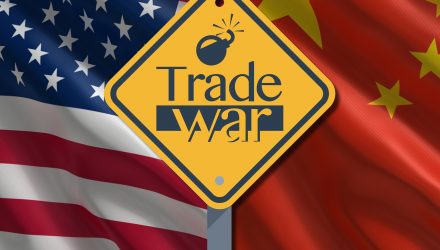As the trade war drama continues, many are wondering: Is a risk-off stance warranted?
Last week saw an acceleration of the protectionist rhetoric between the US and China. The week ended on a down note, with US President Donald Trump tweeting a proposal for another $100 billion in tariffs, swiftly followed by China, despite its important holiday, promising to match the most recent round of tariffs and fight the US “at any cost.”
US-China Trade: Is a Risk-Off Stance Warranted?
Following China’s threat, Trump admitted that the US may feel some “pain,” while US Treasury Secretary Steven Mnuchin conceded that, though unlikely, “there is the potential of a trade war.”
While we are far from a trade war at this juncture, the heightening trade tension is playing out just as I feared. In all honesty, I don’t see a compelling reason why China would make concessions to the US, especially given that senior White House officials, in an attempt to reassure concerned US citizens, have said the US’ threats are just a negotiating tool.
It’s been many years since the negotiations class I took in law school, but I’m pretty sure I learned that if your opponent knows you are bluffing, they are unlikely to concede. Adding to the unlikeliness that China will actually grant meaningful trade concessions is that the US is pursuing this alone, without enlisting the help of other key trading partners, and that Chinese President Xi Jinping has consolidated his power and is arguably stronger than ever before.
Sure, the Shanghai Stock Exchange Composite Index is down more than 10% from its January peak,1 largely on trade war concerns, but in general, Chinese citizens do not have a large portion of their net worth tied up in the stock market, so it seems the Chinese government may feel less pressure to make any meaningful compromises. To be clear,
I’m not suggesting the US is wrong in pursuing intellectual property violations; however, its approach seems to carry with it a low probability of success. This is particularly dangerous given that China can utilize non-traditional retaliatory tools such as devaluation of its currency or the cessation of some or all of its US Treasury purchases — or an actual sale of its US Treasuries.
Investors react to heightened volatility
Not surprisingly, US investors took this protectionist threat more seriously this past week. Stock market volatility, which had fallen mid-week, rose by the end of the week. Emerging markets stocks also sold off while Asian stocks posted some modest losses.2 More indicative of investor fear was the dramatic flight into Treasuries last week — flows were the highest seen in more than two years. After rising mid-week, the yield on the 10-year Treasury moved lower and finished at 2.79%.1
Market sentiment has clearly soured. The critical question: Is a move to risk-off positioning justified at this juncture?
In order to properly answer this question, we must explore the two key drivers that have heretofore created an upward bias for stocks globally: 1) the improving global economic environment and 2) still-accommodative monetary policy.
1. Despite recent disappointments, the global growth story remains intact. Data suggests the global growth story remains intact, but there are some significant blemishes. While the US unemployment rate remained at its low level, the US jobs report for the month of March was far from a Goldilocks scenario.
The increase in nonfarm payrolls was relatively low at 103,000, but wage growth was relatively high at 0.3% month-over-month and 2.7% year-over-year. (Remember that wage growth is the metric in the jobs report that the US Federal Open Market Committee [FOMC] follows most closely, given its potential to impact inflation. A continuation of this trend could cause the FOMC to raise rates four times this year versus three.)

